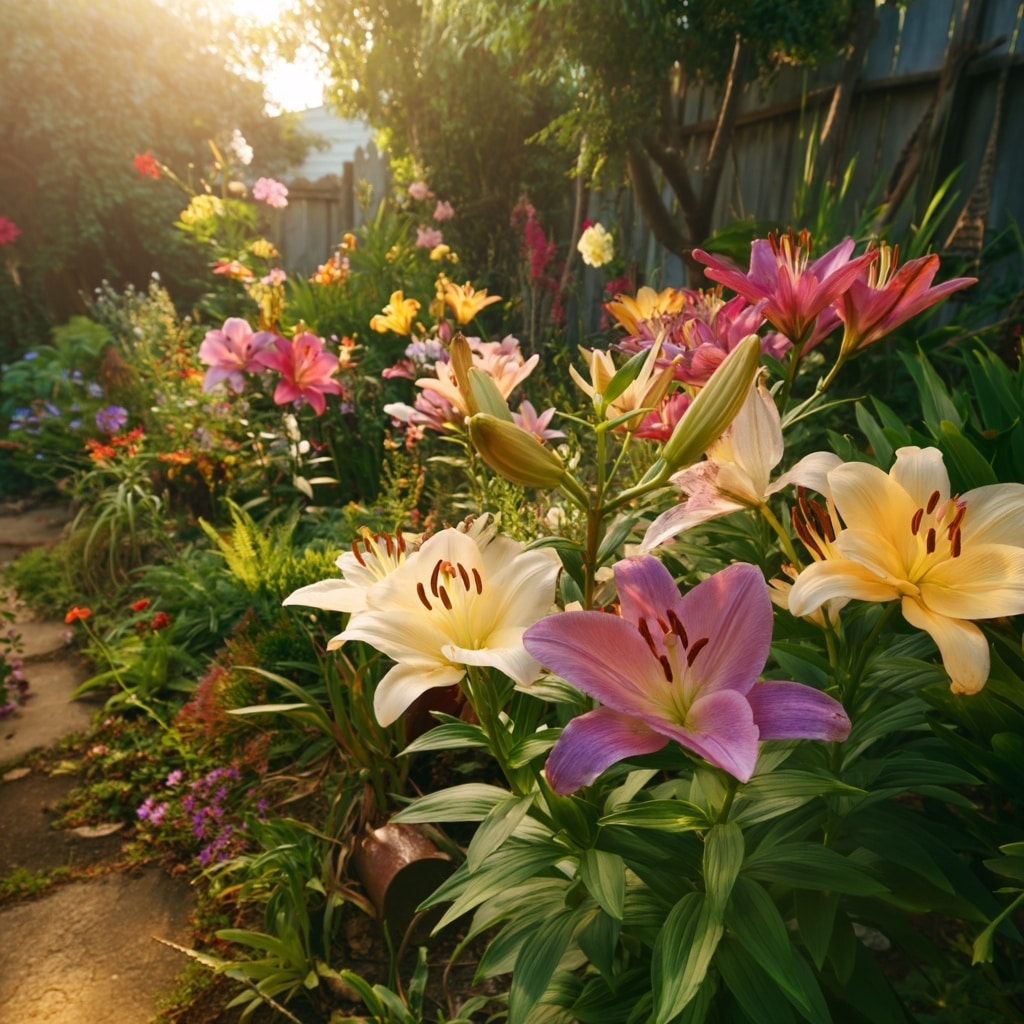A lily is more than just a beautiful garden flower—it’s a timeless symbol of elegance that has graced gardens and homes for centuries. Belonging to the genus Lilium, lilies encompass over 80 distinct species, each known for their vibrant blooms, intoxicating fragrance, and graceful structure. Native to the temperate regions of the Northern Hemisphere, these hardy perennials have long been treasured not only for their stunning appearance but also for their versatility in landscaping and cultural symbolism. Whether you’re new to gardening or looking to expand your flower bed, understanding the lily’s unique characteristics is the first step to cultivating a show-stopping display in your own backyard.
Table of Contents
Physical Description of the Lily
Lilies are upright, perennial plants that grow from bulbs made up of fleshy, scaly layers rather than a single solid structure. These bulbs store energy, allowing the plant to survive cold winters and bloom impressively year after year. Most lilies produce tall, leafy stems with narrow, lance-shaped leaves arranged in a spiral pattern.
What makes a lily truly stand out is its remarkable bloom. Each flower features six colorful, petal-like segments, which can appear in various shapes depending on the species. Some, like the Easter lily (Lilium longiflorum) and Madonna lily (Lilium candidum), produce trumpet-shaped blossoms with a gentle curve. Others, such as the Turk’s cap lily (Lilium martagon), display backward-curving petals that form a turban-like silhouette. For a more open and relaxed appearance, species like the wood lily (Lilium philadelphicum) and goldband lily (Lilium auratum) create wide, bowl-shaped flowers.
Lilies are available in nearly every color—white, yellow, pink, red, orange, and even speckled or bicolored varieties. Many emit a strong, pleasant fragrance that makes them popular for cut flower arrangements and outdoor sensory gardens. While most lilies grow between 30 to 120 cm (1 to 4 feet) tall, some varieties can tower over 2.5 meters (8 feet) under optimal conditions, making them perfect for adding vertical interest to garden borders.
Cultivating Lily Plants Successfully

Growing a lily in your garden can be both simple and deeply rewarding if you understand its basic needs. While many gardeners start lilies from pre-grown bulbs, they can also be propagated from seed—though this method takes more time and patience. Most prefer bulb planting for faster results and more predictable blooming.
Sunlight requirements vary by species, but in general, lilies do best with full sun to partial shade. At least six hours of direct sunlight helps them produce strong stems and vibrant blooms. However, some varieties appreciate a bit of afternoon shade in hotter climates.
When it comes to soil, lilies thrive in well-drained, loamy soil that stays moist but not soggy. Good drainage is essential because soggy soil can lead to bulb rot. Adding compost or organic matter will improve the texture and fertility of your garden bed.
Most lilies bloom during mid to late summer, with peak flowering in July and August. However, certain types start as early as late spring, while others continue blooming into early autumn. By selecting a mix of early, mid, and late bloomers, you can enjoy a continuous display of lily flowers throughout the season.
Lily Growing Tips:

- Plant bulbs in the fall, about 6–8 inches deep.
- Space them 8–12 inches apart for air circulation.
- Apply mulch to retain moisture and suppress weeds.
- Water regularly, but don’t overdo it—especially in rainy seasons.
- Stake taller varieties to prevent them from toppling.
With a bit of planning and care, lilies can become one of the most low-maintenance, high-reward flowers in your entire garden.
History and Traditional Uses of the Lily

The lily has been admired not only for its beauty but also for its symbolism and practical value throughout human history. Some of the earliest known cultivation dates back to the 2nd millennium BCE, where the Madonna lily (Lilium candidum) was grown in Asia Minor. Its bulbs were used in ointments and herbal remedies, showcasing its importance in ancient medicine.
In ancient Greece and Rome, lilies were cherished for both ornamental and medicinal purposes. These civilizations recognized the plant’s aesthetic appeal and healing properties, often using its extracts for skincare treatments and perfumes.
During the Middle Ages, the lily took on deep symbolic meaning, particularly in Christian art. The white Madonna lily became a powerful emblem of purity and the Virgin Mary, frequently appearing in religious paintings and church decor. This sacred association continues today, with lilies often featured in Easter celebrations and memorial bouquets.
In East Asia, lilies were cultivated from an early time for both culinary and decorative uses. Certain species, like Lilium lancifolium (the tiger lily), were even grown for their edible bulbs, which were cooked and included in traditional dishes.
Across cultures and centuries, the lily has remained a symbol of purity, renewal, and elegance, making it a lasting favorite in gardens, ceremonies, and artistic expressions worldwide.
Conclusion

Whether you’re drawn to their striking forms, their fragrance, or their symbolic meaning, growing a lily in your garden is a decision you won’t regret. With just a bit of care and the right growing conditions, these classic blooms will reward you with years of color and charm. Choose the right variety for your space and enjoy one of nature’s most beloved flowers season after season.





